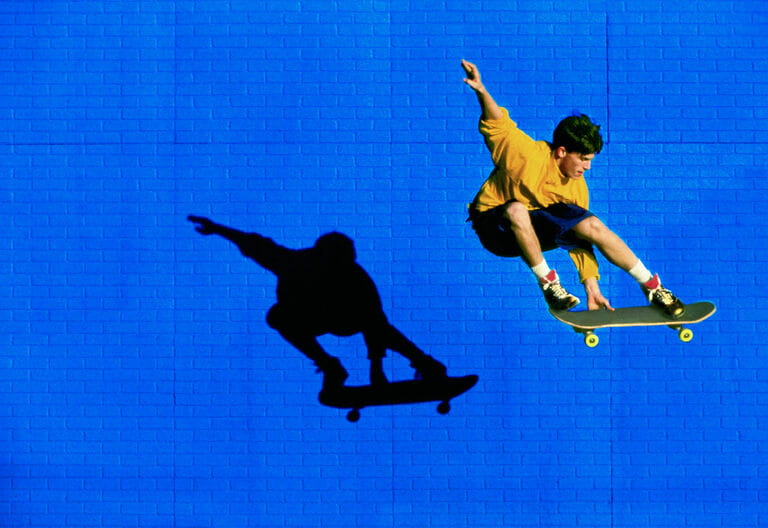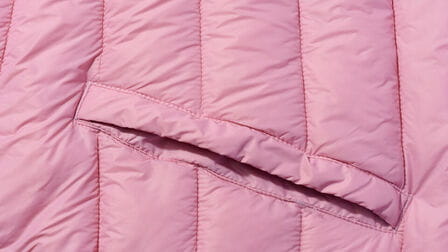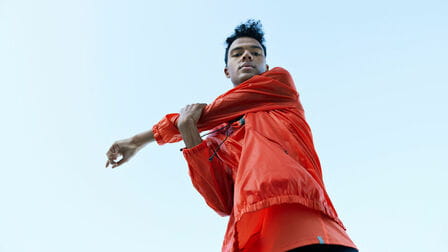Streetwear has transitioned from a niche fashion scene to a global phenomenon, capturing the attention of fashion enthusiasts, celebrities, and mainstream brands alike. Its influence can be seen not only on the runways but also in popular culture, such as music, art, and film. But how did streetwear gain such widespread popularity, and who are the key players behind its meteoric rise? This article delves into the history of streetwear, exploring the individuals and movements that contributed to its current status as a dominant force in the fashion industry.
The Early Days: Skateboarding and Hip-Hop Culture
The roots of streetwear can be traced back to the skateboarding and hip-hop subcultures of the 1970s and 1980s. Skateboarders and hip-hop artists, often marginalized by mainstream society, found common ground in their shared love for self-expression and individuality. They adopted functional clothing that allowed for freedom of movement, such as baggy jeans, graphic T-shirts, and sneakers. These clothing items became symbols of their respective cultures and were often adorned with bold designs, logos, and customized artwork.
Skateboarding Culture
- Streetwear emerged from skateboarding culture in the 1970s and 1980s
- Skateboarders wore functional, comfortable clothing like baggy jeans and t-shirts
- Clothing was customized with bold graphics and logos
- Served as symbols of the skateboarding subculture and lifestyle
Hip-Hop Culture
- Hip-hop culture also contributed to the rise of streetwear
- Hip-hop artists embraced personal style as a form of self-expression
- Oversized jeans, tracksuits, and sneakers became part of the hip-hop aesthetic
- Clothing often featured graffiti art and customized details
- Became associated with ideals of individuality and authenticity
Shawn Stussy: The Godfather of Streetwear
Shawn Stussy, an American surfer and skateboarder, played a pivotal role in popularizing streetwear in the early days. In 1980, he started selling custom-made T-shirts and surfboards out of his garage in Laguna Beach, California. Stussy's designs, featuring his iconic script logo, quickly gained popularity among local surfers and skateboarders, and his brand soon became a symbol of the laid-back California lifestyle. Stussy's success paved the way for other independent designers and brands to enter the burgeoning streetwear market.
Early Success of Stussy Brand
- Founded in 1980 by Shawn Stussy in California
- Sold customized t-shirts and surfboards
- Featured signature Stussy script logo
- Quickly gained following among surfers and skaters
- Became associated with laidback SoCal lifestyle
Influence on Streetwear Industry
- Stussy was one of the first streetwear brands
- Its success demonstrated potential of independent brands
- Inspired other designers to enter streetwear market
- Set standard for branding, graphics, and style
- Laid groundwork for industry growth in following decades
The 1990s: A Golden Age for Streetwear
The 1990s witnessed a surge in popularity for streetwear, thanks to a confluence of factors. The rise of hip-hop music and culture brought streetwear into the mainstream, as artists like Tupac Shakur, The Notorious B. I. G. , and Jay-Z embraced the style and incorporated it into their public personas. At the same time, skateboarding gained popularity as a mainstream sport, and brands like Supreme, Stüssy, and A Bathing Ape became synonymous with the skater lifestyle. Streetwear also found its way into high fashion, as designers like Marc Jacobs and Karl Lagerfeld began incorporating streetwear elements into their runway collections.
Hip-Hop Goes Mainstream
- Hip-hop exploded in popularity in the 90s
- Rappers like Tupac, Biggie, and Jay-Z embraced streetwear
- Baggy jeans, tracksuits, baseball caps went mainstream
- Streetwear became integral part of hip-hop image
- Rappers referenced brands in lyrics, videos, and interviews
Skateboarding Gains Popularity
- Skateboarding gained mainstream popularity in the 90s
- Tony Hawk, Rodney Mullen became household names
- Brands like Supreme, Stüssy, BAPE hit their stride
- Their clothing embodied skater attitude and style
- Oversize hoodies, graphic tees, and sneakers defined look
The Supreme Phenomenon: A Case Study in Brand Hype
No brand has had a more profound impact on the streetwear scene than Supreme. Founded in 1994 by James Jebbia, a British skateboarder, Supreme quickly became a cult favorite among New York City's skate and hip-hop communities. Known for its limited-edition drops and collaborations with high-end brands, Supreme has generated an unprecedented level of hype and demand, often resulting in long lines and sold-out items within minutes of release. The brand's success has also attracted criticism, with some accusing it of being more focused on hype and exclusivity than on creating quality products. Nevertheless, Supreme remains a dominant force in streetwear, and its influence can be felt across the fashion industry.
Origins and Early Success
- Founded in NYC in 1994 by James Jebbia
- Quickly gained cult following among skaters and hip-hop fans
- Known for limited edition drops and brand collaborations
- Generated hype with weekly product releases
- Opening of Lafayette St. store in 1995 increased brand hype
Global Phenomenon
- Supreme is now one of the most sought-after streetwear brands globally
- Collaborations with high-end fashion houses like LV and CDG
- Products often resell for many times their retail value
- Limited distribution and weekly drops build hype
- Criticized for prioritizing hype over quality and creativity
| Year | Milestone |
| - | - |
| 1994 | Supreme founded by James Jebbia in NYC |
| 1995 | Opened original Lafayette Street store |
| 1998 | Began tradition of weekly product drops |
| 2002 | First collaboration with Japanese brand BAPE |
| 2017 | Collaborated with Louis Vuitton on accessories |
| 2020 | Valued at over $1 billion after Carlyle Group investment |
The Internet and Globalization of Streetwear
The rise of the internet in the late 1990s and early 2000s played a crucial role in the globalization of streetwear. Online retailers and social media platforms made streetwear brands accessible to a worldwide audience, breaking down geographical and cultural barriers. Websites like Hypebeast and Highsnobiety emerged as online authorities on streetwear culture, while platforms like Instagram allowed brands and consumers to connect directly. Streetwear became a truly global phenomenon, with brands from Japan, Europe, and the United States gaining popularity in markets around the world.
Online Retailers & Forums
- Websites like Hypebeast brought streetwear brands online
- Provided worldwide access to limited release items
- Online forums created global community of enthusiasts
- Shared news, reviews, info on latest drops
- Broke down geographical barriers
Social Media
- Platforms like Instagram transformed streetwear
- Allowed brands to engage with audience directly
- Consumers could connect with people worldwide
- Enabled trends to spread rapidly
- Strengthened streetwear as global phenomenon
Japanese Streetwear and Its Global Influence
Some of the most prominent and innovative streetwear brands emerged from Japan and brought a new aesthetic and sensibility to the scene. Japanese brands like A Bathing Ape, fragment design, Undercover, and W)TAPS fused streetwear with high fashion, graphic art, and avant-garde styles. Their distinctive look gained popularity not just in Japan but globally, shaping streetwear worldwide.
A Bathing Ape (BAPE)
- Founded in Tokyo in 1993 by Nigo
- Known for camo prints, ape head logo, limited edition drops
- Collaborated with Pharrell and Kanye to gain US popularity
- Helped incorporate streetwear into high fashion realm
- BAPE stores in NYC and LA brought Japanese style to US
fragment design
- Founded in 2003 by Hiroshi Fujiwara
- Understated, minimal branding and graphic tees
- Gained cult status through pop-up shops and exclusivity
- Collaborations with Nike, Louis Vuitton, and more
- Founder known as "Godfather of Streetwear" in Japan
Undercover
- Launched in 1990 by designer Jun Takahashi
- Blended punk and grunge influences with streetwear
- Gained international recognition at Paris Fashion Week
- Known for disrupting traditional fashion norms
- Collaborated with brands like Supreme and Nike
How Luxury Fashion Adopted Streetwear
In the 2000s and 2010s, luxury and high fashion brands began to embrace streetwear in an effort to capture younger audiences and freshen their brands. By collaborating with streetwear labels and incorporating casual styles like hoodies and sneakers into their collections, high end fashion houses sought to tap into streetwear's cool factor and hype machine. But this also risked diluting the authenticity of some streetwear brands.
Luxury House Collaborations
- Louis Vuitton collaborated with Supreme in 2017
- Dior worked with brands like Stüssy and sacai
- Gucci creative director Alessandro Michele came from streetwear background
- Brought casual fabrics, oversized fits, bold prints to luxury
- Street artists like Trevor Andrew hired for high fashion campaigns
The Rise of "High Fashion Streetwear"
- Many new labels blend luxury with streetwear
- Brands like Alyx, Rhude, and Heron Preston
- Use high end fabrics and elevated construction
- Maintain streetwear silhouettes and branding
- Cater to wealthy hypebeasts and fashion insiders
- Criticized for diluting streetwear authenticity
Oversaturation Concerns
- Some worry about oversaturation of luxury collabs
- Too many brands embracing streetwear hype model
- Focus shifts from creativity to just generating buzz
- Waters down streetwear's subcultural significance
- Mainstream popularity threatens original appeal
Streetwear's Growing Influence on Celebrity Style
As streetwear cement itself in the fashion establishment, celebrities from the music, sports, and entertainment worlds have become key promoters of streetwear labels. Major stars like Kanye West, Rihanna, and Jay-Z have aligned themselves with streetwear culture and used their influence to popularize key brands. While beneficial for business, the endorsements of pop stars has also led some to accuse streetwear of selling out.
Hip-Hop Stars Drive Trends
- Rappers were early streetwear devotees
- Sean Combs and Jay-Z influential in 90s streetwear scene
- Kanye West's sneaker obsession fuels hype -Travis Scott partners with Nike, PlayStation, McDonald's
- Rihanna launches luxury streetwear label Fenty
Athlete Endorsements
- Star athletes act as brand ambassadors
- Steph Curry aligned with Under Armour
- LeBron James has lifetime Nike deal
- Serena Williams collaborates on fashion lines
- Celebrity adds hype and introduces brands to new audiences
The Risk of Selling Out
- Some criticize celebrities for appropriating streetwear
- Music and sports stars have diluted original culture
- Too much celebrity affiliation seen as inauthentic
- Driven by profits and clout rather than creative expression
- Exclusivity central to streetwear gets eliminated
The Double-Edged Sword of Mainstream Success
Streetwear's widespread commercial success and global popularity is a double-edged sword. On the one hand, it represents the triumph of streetwear designers and pioneers who came from marginalized subcultures. But oversaturation and dilution threatens the uniqueness that makes streetwear special. Maintaining authenticity and innovation will be an ongoing challenge as streetwear cements itself in the fashion establishment.
Triumph for Independent Spirit
- Validates streetwear founders who came from subcultures
- Shows mainstream recognition of their creative vision
- Independent spirit thrived against all odds
- Major achievement for pioneering streetwear labels
- Represents counterculture entering establishment
Risk of Losing Authenticity
- Exclusivity was core tenet of streetwear
- Mainstream popularity erodes underground status
- Overexposure leads to oversaturation
- Risk of creativity taking backseat to hype
- Maintaining authenticity now a challenge
Keeping Innovation at the Forefront
- Important for brands to stay connected to roots
- Cannot sacrifice quality or creativity for hype
- Needs to retain elements of subcultural style
- Pioneering designers must nurture new talent
- Collaboration with artists keeps brands fresh
Conclusion
Streetwear's journey from underground subculture to mainstream fashion has been a remarkable one. From its origins in skate and hip-hop culture, streetwear has evolved into a global phenomenon that has reshaped the fashion landscape. Japanese brands like A Bathing Ape, fragment design, and Undercover brought a new aesthetic to the scene, while luxury fashion houses have embraced streetwear in an effort to stay relevant. Celebrity endorsements and mainstream success have propelled streetwear to new heights, but also pose challenges to maintaining authenticity and innovation. As streetwear continues to evolve, it will be interesting to see how it navigates the delicate balance between commercial success and staying true to its roots.

















